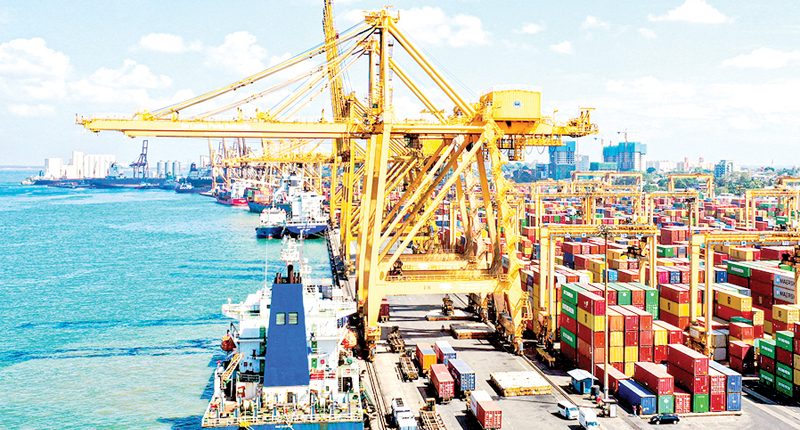Sri Lanka has achieved US$ 4.2 billion in export earnings in the First Quarter of 2025. The country’s export sector has emerged as a beacon of resilience and strategic reinvention in 2025, defying global uncertainties to achieve a robust beginning to the year.
With total export earnings exceeding US$ 4.2 billion in the first quarter—a year-on-year increase of 5.87 percent—the country is sending a clear signal to global markets: it’s back on the export map with renewed vigour and a diversified portfolio.
This increase is not just a numerical rise. It is a story of determination, sectoral adaptation and the steady pivot towards new economic paradigms. At the heart of this success is a symphony of traditional export strengths and emerging service sectors, harmonised under the guidance of the Sri Lanka Export Development Board (EDB).
If the first quarter set a positive tone, March played the crescendo. With export earnings exceeding US$ 1.5 billion—an impressive 6.24 percent increase compared to March 2024 and 11.76 percent higher than February 2025—the month capped off Q1 with unmistakable momentum.
Merchandise exports alone accounted for US$ 1.21 billion in March, while services exports reached US$ 291.12 million, up 7.79 percent year-on-year. These numbers underscore a fundamental truth: Sri Lanka is not just recovering; it is adapting, innovating and positioning itself for long-term competitiveness.
Driving forces
A closer look at the export composition reveals where the strength lies. Still the cornerstone of Sri Lanka’s merchandise exports, the apparel and textile industry proved its staying power. In Q1 2025, the sector earned over US$ 1.38 billion—a robust 11 percent year-on-year growth. March alone contributed nearly half a billion dollars, reinforcing Sri Lanka’s standing as a trusted supplier to Western markets.
Despite competition from regional heavyweights and the looming threat of US tariffs (now under negotiation), Sri Lankan apparel continues to win over buyers with its ethical manufacturing practices, speed-to-market strategies and commitment to sustainability.
One of the most compelling narratives of this quarter lies in the spectacular rise of spices and concentrates, which posted a staggering 71.43 percent growth to US$ 119.04 million. This surge reflects booming global demand for organic and natural ingredients—categories where Sri Lanka’s reputation is unmatched.
Similarly, coconut-based exports surged by 26.44 percent to US$ 257.46 million, driven by value-added products like virgin coconut oil, activated carbon and coir-based goods—an encouraging sign of local industries moving up the value chain.
While the growth in tea exports was more modest—up just five percent to US$ 370.95 million—the sector remains a vital pillar, representing 12 percent of total merchandise exports. The enduring allure of Ceylon Tea continues to anchor Sri Lanka’s agricultural identity in global markets, though it faces pressure from climate shifts and rising production costs.
Behind the tangible goods lies a quiet revolution. Services’ exports brought in US$ 887.04 million in Q1—a 10.88 percent increase compared to the previous year. Transport and logistics services surged by 24.71 percent to US$ 506.88 million, while the ICT/BPM sector contributed US$ 352.53 million, reflecting a 10.8 percent growth.
Global value chain
These figures are more than just economic indicators—they represent a transformation of Sri Lanka’s role in the global value chain, from a goods’ exporter to a service and knowledge hub.
Sri Lanka’s top export markets showed encouraging growth across the board.
United States: The island’s largest single market accounted for 23 percent of total merchandise exports in Q1, with earnings climbing to US$ 775.6 million—a nine percent YoY rise. A Sri Lankan delegation is currently in the US to negotiate the 44 percent tariffs which may be imposed after the 90-day pause.
United Kingdom: Exports rose 4.74 percent to US$ 250.34 million.
India and Pakistan: These Free Trade Agreement partners offered mixed fortunes. Exports to India jumped 40.66 percent, fuelled by petroleum and spice shipments, while exports to Pakistan dropped by 12.77 percent.
European Union: Accounting for 24 of exports, the EU markets collectively rose 9.47 percent in Q1. The Netherlands led the way with a 28.89 percent growth rate, while Germany, France and Belgium also showed healthy increases.
These statistics highlight Sri Lanka’s increasingly diversified market base and the growing sophistication in its trade partnerships.
Not all sectors shared in the Q1 success story. Exports of gems and jewellery, rubber-based goods, electronic components, marine products, cut flowers, fruits and vegetables and boat-building recorded declines. These drops point to the nuanced challenges that exporters still face—ranging from raw material shortages to shifting consumer preferences.
However, rather than being a cause for alarm, these challenges present opportunities for innovation and re-tooling. As the EDB emphasises, targeted support, smart incentives and technological adoption will be key to revitalising these sectors.
Road ahead
With Q1 performance setting a solid foundation, Sri Lanka is now ambitiously pursuing its US$ 19 billion export target for 2025—comprising US$ 14 billion in merchandise and US$ 4.2 billion in services.
This aligns with a broader national vision: by 2030, Sri Lanka aims to reach US$ 36 billion in exports. Achieving that will demand not just policy consistency and market access but also deep engagement with innovation, sustainability, and digital transformation.
Sri Lanka’s export sector is not merely bouncing back—it is evolving. From the factories of Katunayake to the coconut groves of Kurunegala and from the ICT hubs in Colombo to spice gardens in Matale, the country is demonstrating a quiet but powerful resurgence.
The Q1 2025 results tell a compelling story of an economy in transition, driven by resilience, resourcefulness and a clear-eyed vision for the future. As exporters continue to adapt and innovate, Sri Lanka is positioning itself not only as a global supplier but also as a significant influencer in the future of international trade. (EDB)




